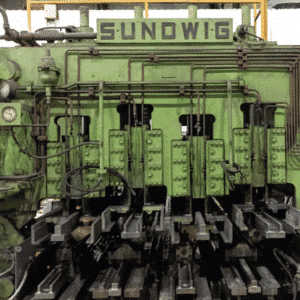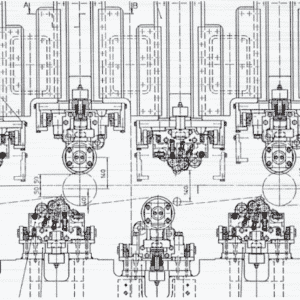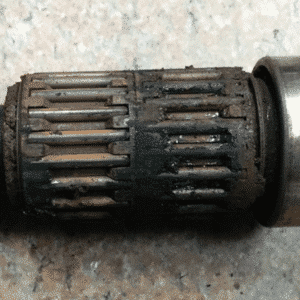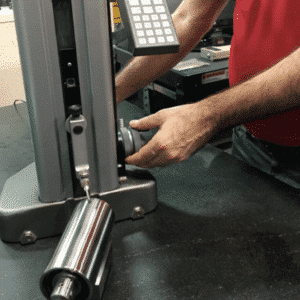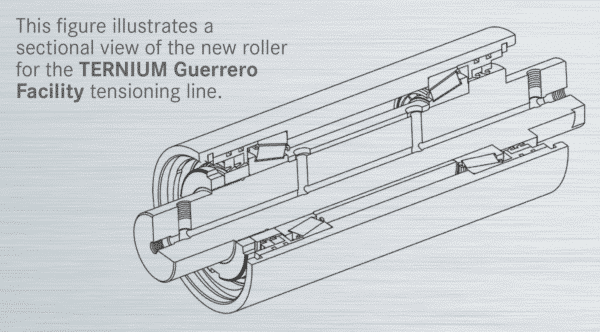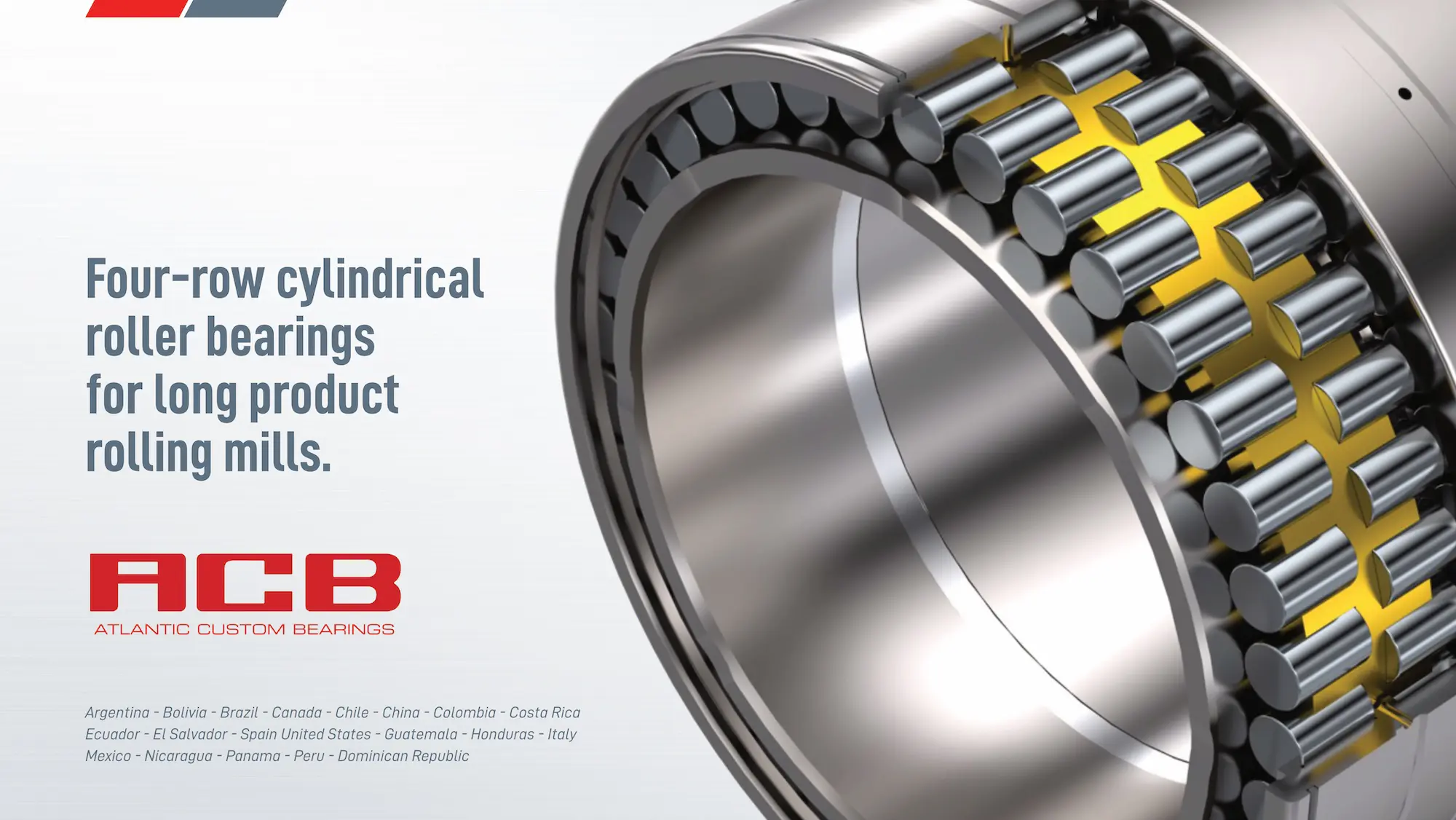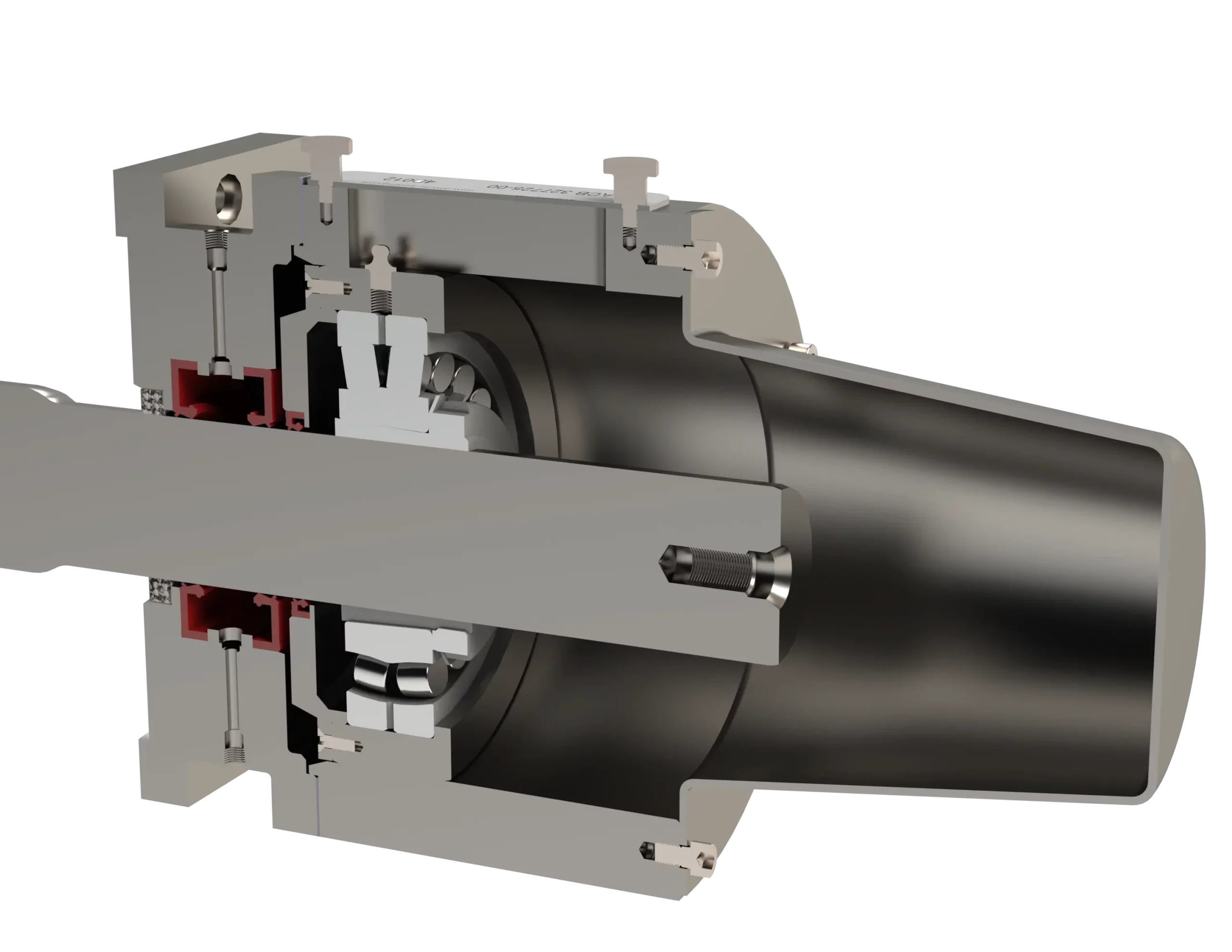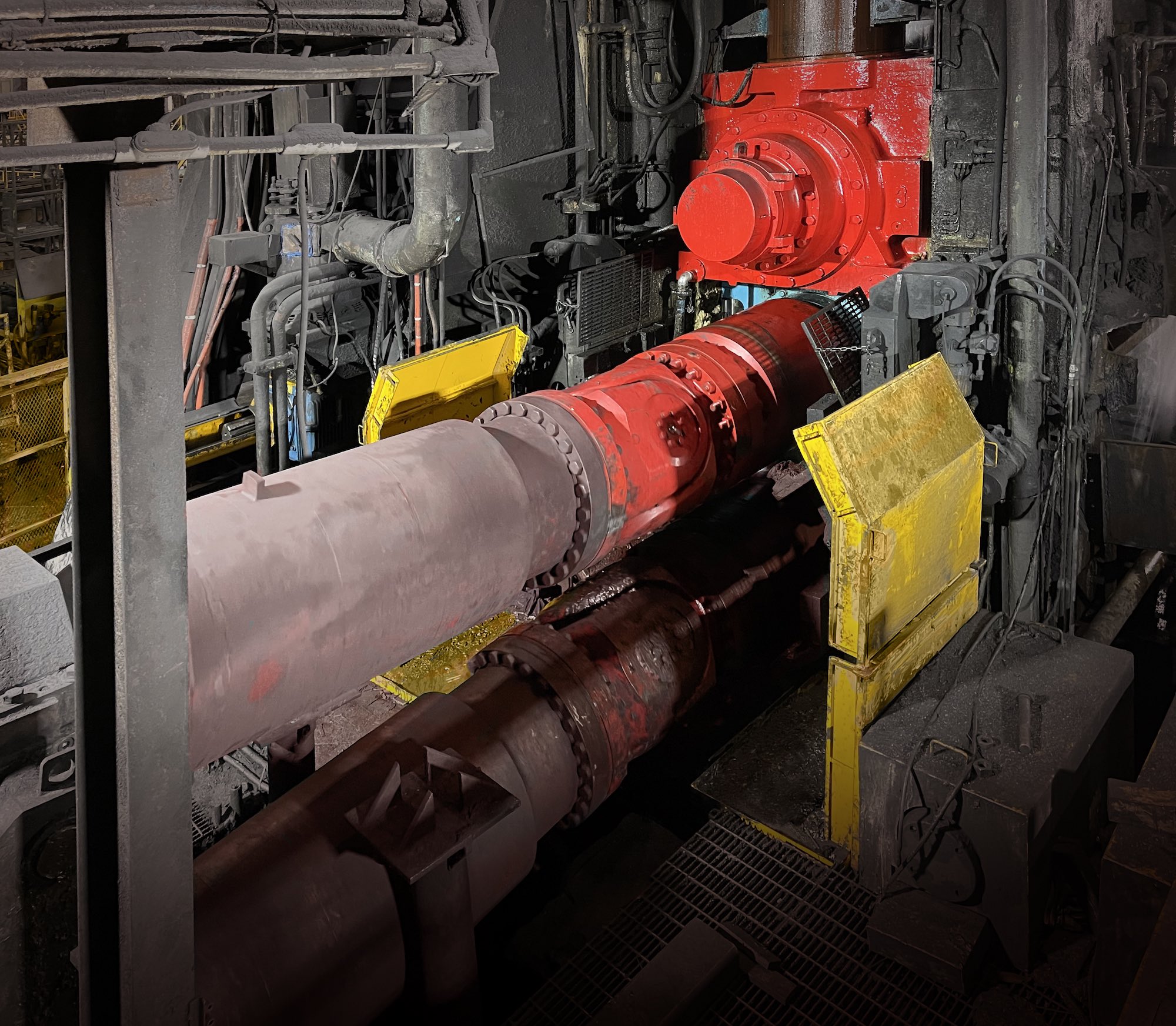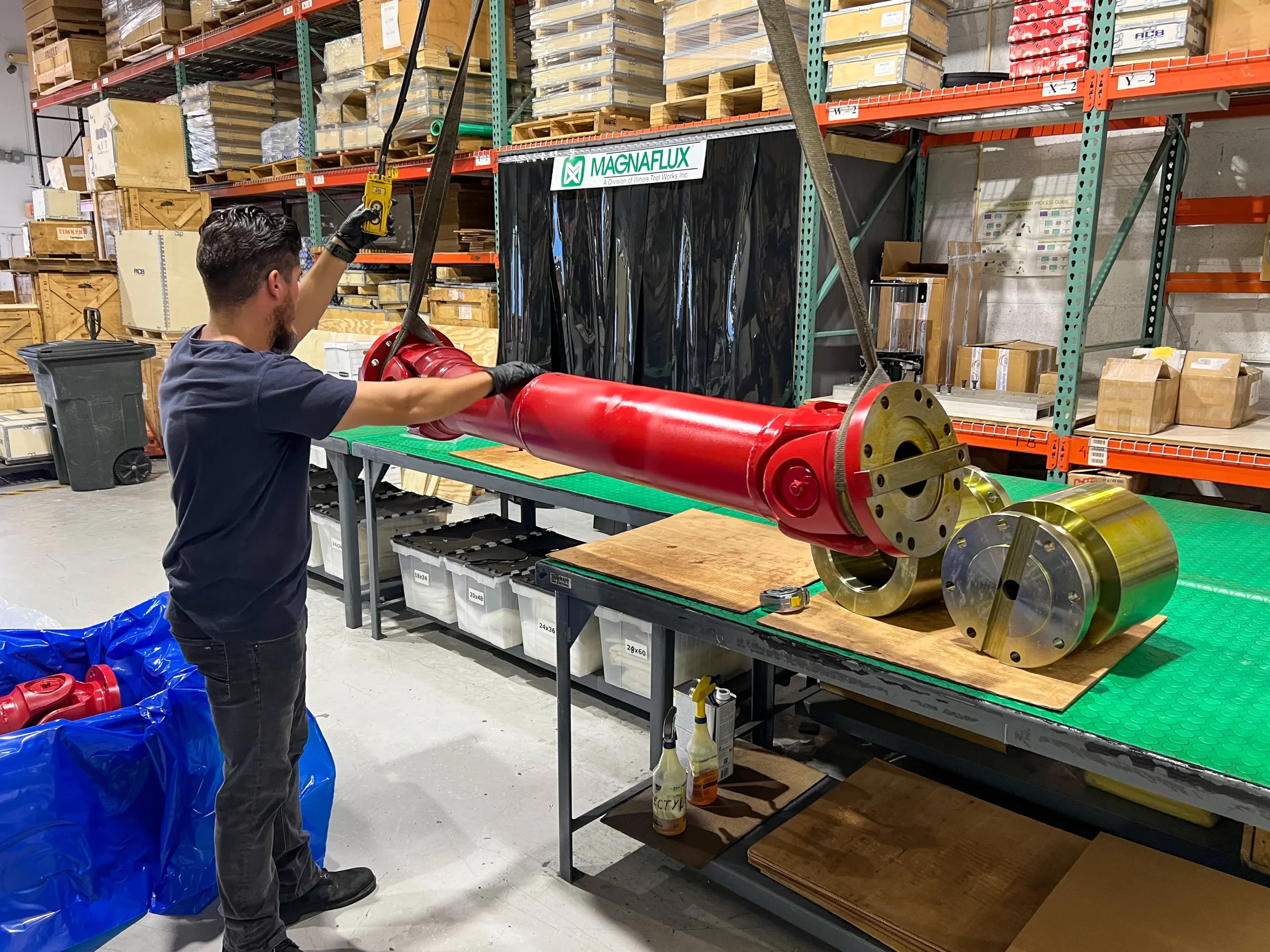To provide a solution to the problem, ABS developed a special product. The new roller is supported by a pair of tapered roller bearings arranged in “O” with an axial clearance precisely determined by a regulating nut. To prevent the entry of the anticorrosive liquid and other contaminants, two frictional seals were placed at each end of the roller.
ABS develops a ACB special bearing for Ternium in Mexico
Operation Background
The tensioning line, illustrated in the figure above, is a machine that provides the steel laminate with the highest possible flatness. This machine has four bending cassettes located above the laminate and four support cassettes or guides located below the laminate, as shown in the figure above the center. Each bending cassette is equipped with 24 bearing-mounted rollers (8 per axle), while each support cassette has con 16 rollers (8 per axle).
The rollers rotate at more than 2100 rpm while pressing the laminate passing between them at a linear speed of 400 m/min. Each roller contains grease to lubricate the bearings. Outside, the rollers are bathed in a special liquid that protects the sheet from corrosion. This liquid penetrates the inside of the roller, dilutes the grease, and ruins the bearings at 3 or 4 months of operation, as seen in the upper right figure. Unable to rotate, the rollers scratch the sheet metal, and the machine ceases to perform its function.
Technical Solution
To provide a solution to the problem, ABS developed a special product. The new roller is supported by a pair of tapered roller bearings arranged in “O” with an axial clearance precisely determined by a regulating nut. To prevent the entry of the anticorrosive liquid and other contaminants, two frictional seals were placed at each end of the roller.
As an integral part of the development process of the new roller, a lubricating grease that achieves total metal-metal separation between the tapered rollers and the race during the normal operation of the tensioning machine was chosen. The new solution will allow us to extend the continuous operating time of the tensioning line, reducing the current high rate of roller consumption and significantly increasing productivity, by reducing downtime due to corrective stops for the replacement of damaged components. In turn, the new design can be disarmed and repaired, also making it possible to grind and refinish the outer surface. The new design simplifies the disassembly of the roller for inspection of components, replacement, and grinding of the outer diameter.
On November 24, 2016, the flex and support cassettes equipped with the new ACB USA rollers were assembled at the entrance of the tensioning machine, starting a 6-month trial period with a monthly review of the condition of the rollers and the subsequent re-entry.
